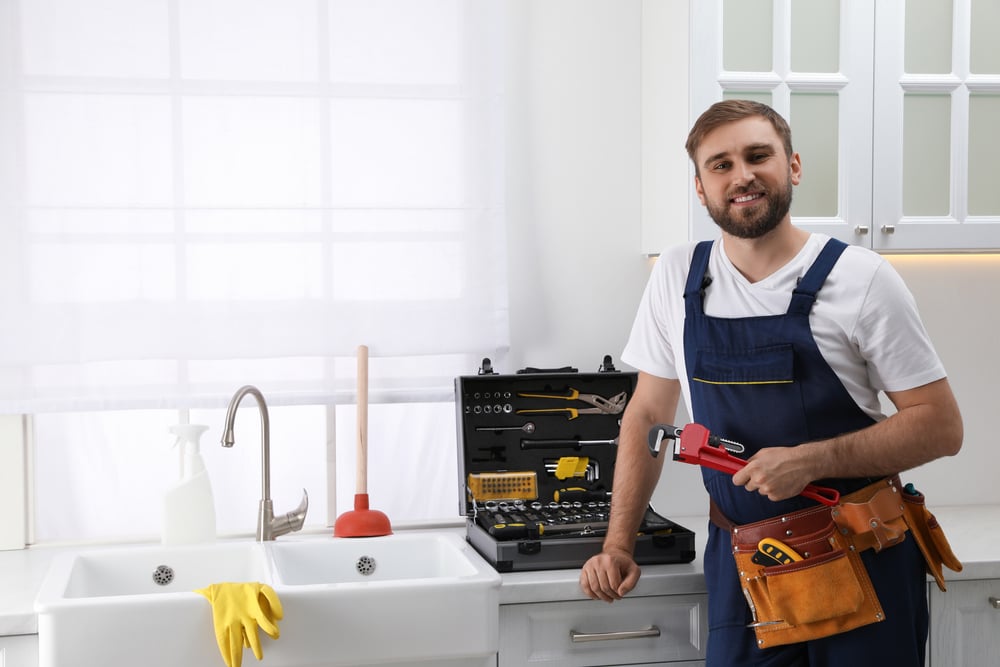
The Evolution of Plumbing: From Ancient Civilizations to Modern Innovations
Introduction to the History of Plumbing
Plumbing systems are an integral part of our daily lives, yet the comfort and convenience of modern plumbing are the culmination of centuries of innovation. The history of plumbing reflects humanity’s ingenuity and the desire for cleanliness, health, and well-being. From the earliest water conduits to today’s sophisticated sewer systems, the journey of plumbing technology is a fascinating story of progress and problem-solving.
Plumbing in Ancient Civilizations
The story of plumbing begins with ancient civilizations, where the foundations of our modern plumbing system were first laid. The Indus Valley Civilization, for example, had advanced plumbing and sewage systems as early as 2500 BCE. They created networks of brick-lined and covered drains alongside roads, and homes had their own bathing areas and water facilities, indicating a prioritization of sanitation.
In ancient Egypt, copper pipes were used to build sophisticated plumbing systems, including elaborate bathrooms in the pyramids for the dead to use in the afterlife. The Greeks took plumbing technology further, developing the first showers by having aqueducts and lead pipes supply cold water.
However, it was the Romans who truly revolutionized plumbing. They constructed vast sewer systems, public bathhouses, and even underfloor heating systems. The grandeur of Roman baths and the efficiency of their aqueducts are testaments to their engineering prowess. The Cloaca Maxima, one of the world’s earliest sewage systems, is still in use today, albeit updated, showcasing the durability and forward-thinking of Roman plumbing technology.
The Dark Ages and Plumbing
The fall of the Roman Empire led to a decline in the sophistication of plumbing systems. During the Dark Ages, much of the plumbing and sewage system knowledge was lost or ignored, and populations suffered as a result. Sanitation became rudimentary, and water was often drawn from communal wells. It wasn’t until the later medieval period that castles and monasteries began to incorporate more advanced plumbing fixtures, such as basic indoor plumbing to carry away waste.

The Renaissance of Plumbing
The Renaissance brought a renewed interest in the arts and sciences, which also sparked advancements in plumbing technology. Sir John Harington, an English courtier, invented the flushing toilet for Queen Elizabeth I, although it did not become widespread at the time. This era saw the return of indoor plumbing in more affluent homes, with lead pipes carrying cold water to private residences.
The 16th and 17th centuries saw further developments, such as the creation of closed sewer systems and the introduction of the first valve-type flush toilet. However, it wasn’t until the 19th century that the modern plumbing system as we know it began to take shape.
The history of plumbing is a testament to human innovation and its ability to improve living conditions. From the aqueducts of ancient Rome to the flushing toilets of the Renaissance, each advancement laid the groundwork for the next. Today’s plumbing fixtures, sewer systems, and indoor plumbing owe much to these early innovations.
As we look back on the history of plumbing, it’s clear that the development of these systems has been driven by the needs of society. The quest for clean water, efficient waste removal, and better public health has driven the evolution of plumbing from the simplest channels to complex networks of pipes and fixtures. The modern plumbing system is a marvel of engineering, but it stands on the shoulders of these ancient innovations.
In the next sections, we’ll explore how the Industrial Revolution sparked a new era of plumbing technology, leading to the sophisticated plumbing systems we rely on today. We’ll see how the demand for better sanitation in growing urban centers led to the widespread adoption of indoor plumbing and the standardization of plumbing fixtures. And we’ll discover how the challenges of the 20th century led to the development of the modern sewer system, which has become essential to the functioning of our cities and towns.
The history of plumbing is not just a tale of pipes and drains; it’s a story of human progress. It’s about how we’ve harnessed water, one of our most precious resources, to improve our lives. It’s a narrative that continues to unfold as we develop new plumbing technologies to meet the challenges of the 21st century. As we move forward, we carry with us the lessons and legacies of the past, building on the foundations laid by the great civilizations that came before us.
The Industrial Revolution and the Plumbing Industry
The Industrial Revolution marked a significant turning point for the plumbing industry. As cities grew, the demand for more sophisticated water pipes and sewage systems became critical. It was during this era that the first copper pipes were introduced, replacing the lead pipes that were common at the time. Copper pipes, known for their durability and safety in transporting potable water, became a staple in plumbing.
This period also saw the development of the first comprehensive plumbing codes, which were essential in standardizing the installation and maintenance of plumbing systems. The codes ensured that plumbing practices met the necessary health and safety standards, which was particularly important as the understanding of disease transmission through water sources became clearer.
The 19th and Early 20th Century Plumbing Advances
The 19th and early 20th centuries were a time of rapid advancement in the plumbing sector. The introduction of the national public health act was a response to the public health crises of the time, such as cholera and typhoid outbreaks. This act played a pivotal role in the development of modern plumbing and building codes, which laid down regulations for proper sanitation to protect public health.
During this time, the first flushing toilet became commercially available, revolutionizing the way waste was managed in homes and public buildings. This innovation greatly improved sanitary conditions and was a key factor in the promotion of indoor plumbing systems.
Plumbing During the World Wars
The World Wars brought about unexpected advancements in the plumbing industry. With metal scarce, alternatives to copper pipes were sought, leading to innovations in materials and plumbing techniques. The wars also accelerated the development of plumbing and building codes, as the need for rapid construction of facilities necessitated clear, efficient guidelines.
The period also saw significant improvements in the way potable water was delivered and used. The understanding of waterborne diseases led to better water treatment methods and the implementation of more rigorous standards for water pipes and plumbing systems.
The Modern Era of Plumbing
The modern era has been characterized by a continuous push for safer, more efficient plumbing systems. The plumbing code has evolved to address the complexities of contemporary plumbing, with a strong emphasis on conserving water and ensuring the safety of potable water supplies.
The shift away from lead pipes, once standard, to copper pipes and other safer materials has been a significant milestone in the plumbing industry. These changes reflect a broader commitment to environmental responsibility and public health.
In the modern era, the plumbing industry continues to innovate, with advancements in technology leading to smarter, more efficient systems. The development of water-saving fixtures, the refinement of water treatment processes, and the introduction of eco-friendly materials are all part of the industry’s response to the challenges of the 21st century.
The history of plumbing is a rich and complex one, with each era contributing to the development of the systems we rely on today. From the first copper pipes to the latest plumbing code revisions, the industry has shown a remarkable ability to adapt and improve. As we look to the future, it is clear that the plumbing industry will continue to play a vital role in ensuring the health and well-being of people around the world.

The Digital Revolution and Modern Plumbing Systems
As the world entered the digital age, modern plumbing systems saw a significant transformation. The focus shifted towards not only providing fresh water and sanitation but also optimizing resource management and efficiency. The digital revolution has enabled the integration of smart technologies into plumbing, allowing for real-time monitoring and control of water usage.
Innovations such as sensor-operated faucets and toilets, programmable water heaters, and intelligent leak detection systems have become increasingly common. These advancements help in conserving fresh water by preventing wastage and ensuring that the precious resource is used judiciously. Moreover, the advent of smart homes has brought plumbing systems into the fold of home automation, offering unprecedented levels of convenience and efficiency.
Sustainable Plumbing and Water Conservation
The 21st century has brought with it a heightened awareness of environmental issues, leading to a surge in sustainable plumbing solutions. Modern plumbing systems are now designed with water conservation in mind, featuring devices like low-flow showerheads, dual-flush water closets, and water-efficient water heaters.
The use of copper piping continues to be a popular choice due to its longevity and recyclability, contributing to sustainable building practices. Additionally, innovations such as greywater systems and rainwater harvesting are becoming more prevalent, allowing for the reuse of waste water in landscaping and flushing toilets, further reducing the demand for fresh water.
The cast iron bathtub, a staple of luxury in the past, has also seen a shift with the introduction of more sustainable materials that retain heat better and are manufactured with a smaller environmental footprint. Similarly, the management of sewer gas and the treatment of waste water have seen improvements, with modern systems designed to be more sealed and efficient, reducing odors and the risk of contamination.

The Future of Plumbing: Challenges and Innovations
As we look towards the future, the plumbing industry faces the challenge of ensuring a reliable supply of fresh water in a world where water scarcity is becoming an increasingly pressing issue. The lessons learned from the first sewer system, which revolutionized waste management, to the developments made post-World War II, which saw a boom in the standardization of plumbing systems, all contribute to the ongoing evolution of the industry.
Modern plumbing systems are expected to become even more sophisticated, with advancements in materials and technology leading to greater efficiency and sustainability. The focus will likely be on reducing water usage, minimizing waste, and improving the recycling of water. Innovations in water heaters, for example, may lead to systems that provide hot water on demand without the standby energy losses associated with traditional tank systems.
The future may also see a shift away from centralized sewer systems to more localized treatment solutions, allowing for the recycling of waste water on-site. This could reduce the burden on municipal systems and provide a source of water for non-potable uses, further conserving fresh water resources.
In conclusion, the plumbing industry has come a long way from the rudimentary systems of ancient civilizations to the complex and efficient networks of today. The evolution of plumbing has been driven by a combination of technological advancements, environmental concerns, and the ever-present need for clean water and effective sanitation. As we continue to face global challenges related to water scarcity and climate change, the industry is poised to adapt and innovate, ensuring that it remains at the forefront of efforts to create a more sustainable and resilient future.







